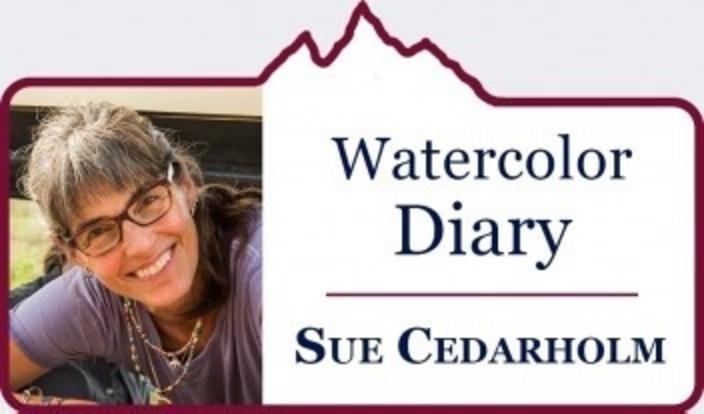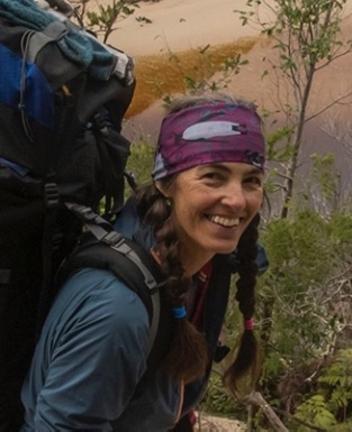Back to StoriesThe Land Is Big, We Are Small, The Potential Perils Many
November 10, 2017
The Land Is Big, We Are Small, The Potential Perils ManySometimes Art Puts The Scale Of People In Perspective. Sue Cedarholm Goes To Avalanche Canyon
I’ve lived in Jackson Hole for decades. Last weekend, I took a wilderness first aid
course and it opened my eyes.
During the intensive 16-hour class, I sat listening to all
the possible scenarios in which medical attention might be needed far from the
safety of civilization. It made me think about how unprepared most of us are
when we head into the backcountry.
How a fall when we are blithely hopping across the scree can
get serious, or the perils that arise if you go hunting alone and don’t tell
anyone where you are, or even thinking you don’t need water or matches,
moleskin or a rain jacket.
Who ever thinks about having to bivouac or needing serious help
after your cell phone dies? Or when you can’t call in a helicopter and Siri is out of
commission when it comes to finding instructions on how to make a tourniquet.
I would argue that those of us who go for hikes or mountain
bike rides in the mountains straight from work might be the most complacent
about safety and first aid.
One might assume, “I am just riding this trail that starts
at the edge of town, what could possibly go wrong?”
We’re fortunate enough to live in an ecosystem that is
largely without handrails and babysitters. It’s hard to explain the attitude
that we locals have when often we run into visitors along the roadside who are
petrified by the thought of wild bears and are reluctant even to get out of
their cars.
Risk is relative. They read about one grizzly attack on social media back in
Manhattan or DC or Seattle; they learn of an avalanche or a fatal accident
involving a raft flipping in the Snake and they believe being in nature is a
terribly dangerous activity. There are
far more predator attacks on people involving other humans than by bears.
"Risk is relative. They read about one grizzly attack on social media back in Manhattan or DC or Seattle; they learn of an avalanche or a fatal accident involving a raft flipping in the Snake and they believe being in nature is a terribly dangerous activity. There are far more predator attacks on people involving other humans than by bears."
As we learned about what to do when you approach a scene
where an accident has happened and what should be going through your mind, I
thought back on many a trip where we were lucky.
Things could have gone terribly wrong fast but did not. I do
try to always have the proper clothing, food, water, and a basic first aid kit,
but during the course of the weekend I realized I was severely lacking in my first
aid knowledge.
In Teton County we have an incredible group, Teton County
Search and Rescue, the national parks have amazing rescue rangers as well. But
you don’t want to have to call them because you were not prepared.
After all the time I spent hiking this summer and seeing other
people out there I am surprised there are not more accidents requiring rescues.
I revere nature because it humbles me.
This painting is a view at Lake Taminah up Avalanche Canyon
in Grand Teton National Park. The trail is “unimproved” and that would be putting
it mildly.
There have been three huge avalanches over the years that
have left piles of downed timber that you must work your way through. You get
scraped and scratched climbing up and over the trees and it makes for difficult
route finding as well.
After going up to the lake and then having to come back down
through the fallen snags, my friend and I were both pretty bloody--our legs,
arms and hands. We could have broken an
ankle or tripped and become impaled by a stick. Unlikely, but it happens.
My point being that we as locals and regular users of the
wilderness should take it upon ourselves to be well prepared and to be able to take care of ourselves. The
best way we can do this is to prevent an injury. Taking this class just made me
want to become more competent.
The land is big and we are small, our significance dwarfed
even more in the case of emergency.
EDITOR'S NOTE: Check out other paintings in Sue Cedarholm's Watercolor Diary in which she is making one new watercolor every day for a year.




